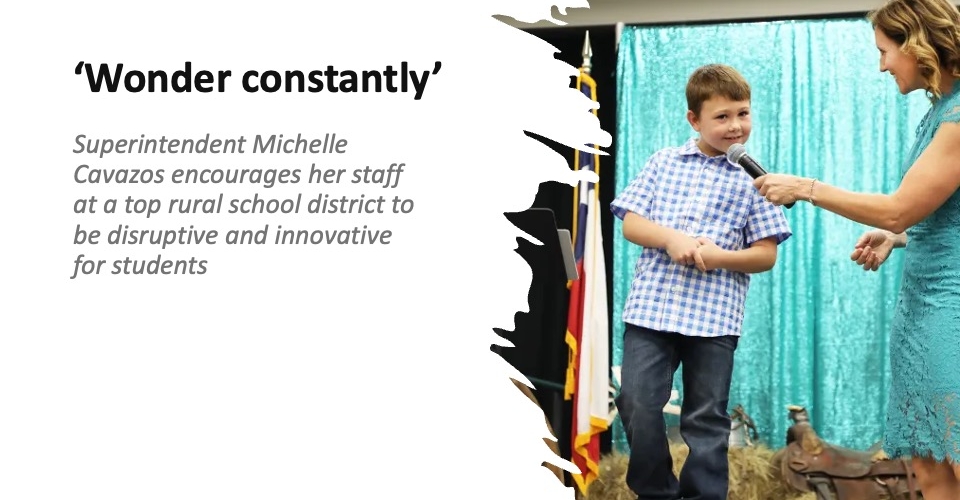In the realm of educational technology, a groundbreaking innovation has emerged that promises to revolutionize the landscape of K-12 education: generative Artificial Intelligence (AI). Unlike Alexa, Siri and recommendation engines, generative AI is a type of artificial intelligence that excels at creating original content, simulating human-like behavior, and generating unique responses to complex prompts.
Unlike these other AIs, which rely on predefined rules and data, generative AI leverages large datasets and neural networks to learn patterns and generate novel output. One of the most noteworthy applications of generative AI is the use of language models, such as OpenAI’s ChatGPT, which have shown remarkable capabilities in generating text that is coherent, contextually relevant, and, in some cases, virtually indistinguishable from human writing.
The promise of generative AI for K12 classrooms
In schools, generative AI has the ability to profoundly impact early literacy and numeracy skills among other opportunities. AI-powered interactive learning platforms can personalize lessons, adapt content based on individual student needs, and provide real-time feedback. By engaging in interactive AI-driven activities, young learners can foster creativity, critical thinking and communication skills while developing a love for learning. Furthermore, generative AI already offers virtual tutors that can support struggling students by providing additional practice, explanations and remediation.
More from DA: Are teachers and parents becoming more confident about school safety?
These AI-driven tutors can complement the efforts of teachers and help ensure that each child receives the attention they need to thrive academically. For students in higher grades, Generative AI can serve as a valuable aid in research and project work. By accessing vast repositories of information and generating relevant content, AI can support students in crafting well-informed essays, reports, and presentations. Moreover, generative AI could play a role in foreign language education, offering immersive language practice and promoting conversational fluency. AI-powered language learning tools also can create simulated interactions, allowing students to practice in a low-stress environment while building confidence in their language skills.
By simulating experiments and analyzing complex data, perhaps assisting students in music composition, creative writing, and visual arts, AI tools can generate practical ways to understand content. Human oversight is critical, however, to ensure that AI-generated content aligns with the educational objectives and standards set by the school curriculum. Teachers can curate and guide the use of AI-generated resources, fostering a balanced and enriching learning experience. When the proper human guidance and guardrails are in place, AI-generated content can inspire students, spark new ideas and lead to unparalleled artistic expressions.
Addressing concerns
With the advent of generative AI, some concerns should arise about its potential misuse or students’ dependency on technology. It is essential to strike a balance between AI integration and maintaining a human-centered approach to learning.
Generative AI should complement the teacher-student relationship, not replace it. Transparency in the use of AI and ethical considerations must also be emphasized and taught with standards put in place for appropriate use and citation. Students should be taught that when they are interacting with AI systems, transparency of the AI use is critical and data privacy must be safeguarded at all times.
Technology leaders can pave the way for student data privacy by reviewing terms of use and details about the capture of PII and providing recommendations prior to any adoption.
Leading and protecting
As educational technology leaders, it is our collective responsibility to explore the potential of generative AI, harness its benefits and navigate the challenges it poses. By doing so, we can help to equip the next generation with the skills, knowledge, and creativity they need to thrive in an increasingly AI-driven world.
Educational institutions must ensure that any data shared with AI platforms are anonymized and stripped of any personally identifiable information. Clear agreements should be in place to protect student data from unauthorized access, use, or sharing.
It is also essential, as with many web-based tools, to obtain informed consent from parents or guardians. Transparently communicating the purpose and scope of AI integration will foster trust within the school community. Prioritizing data security, transparency, and ethical considerations will ensure that student data privacy remains protected, and the integration of AI enhances, rather than compromises, the educational journey.
Embracing generative AI in K-12 education represents a transformational journey that promises to enrich the learning experiences of our students. By harnessing the power of AI, we can create dynamic, adaptive, and personalized educational environments that cater to the diverse needs and interests of every learner.









